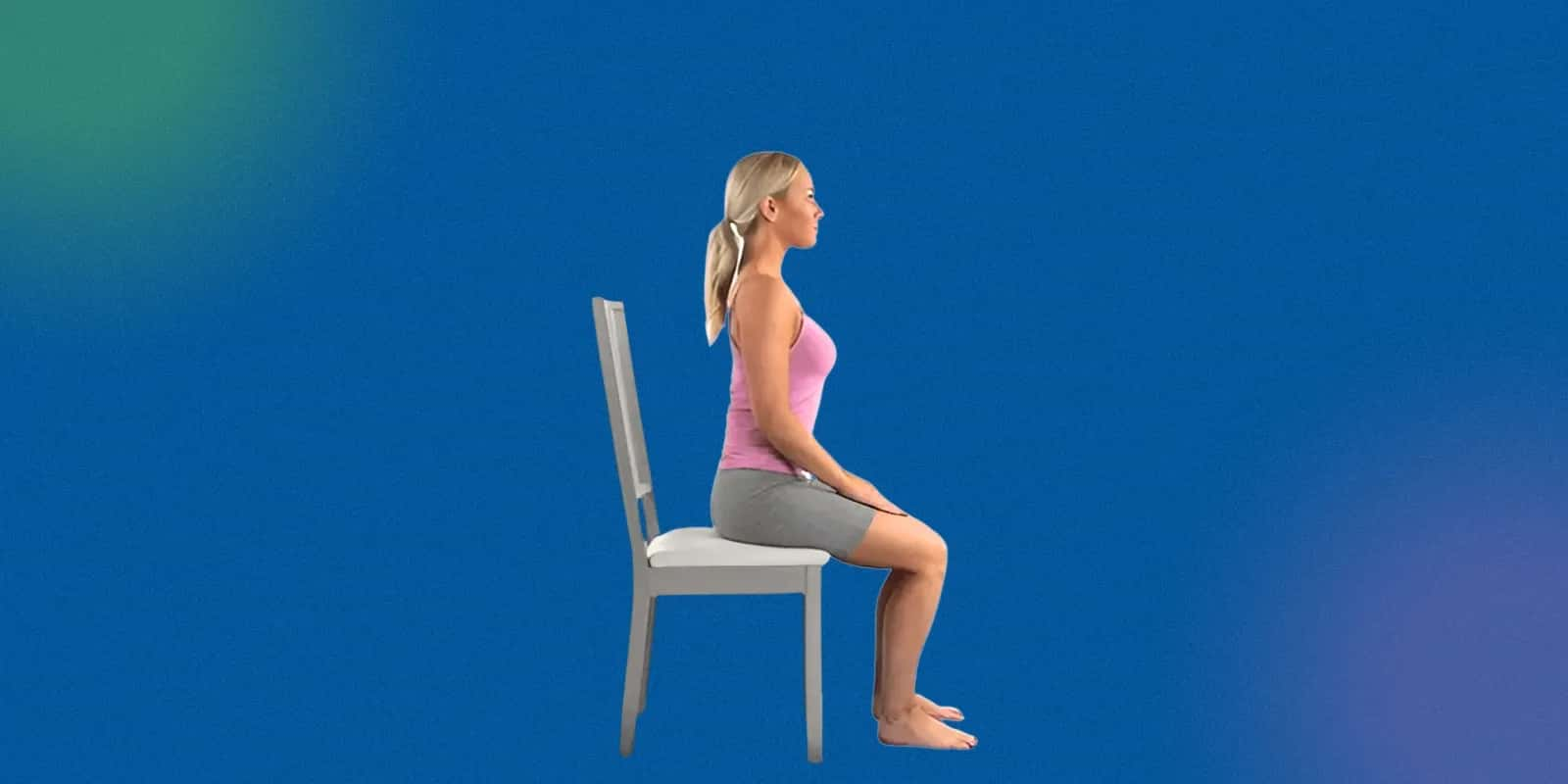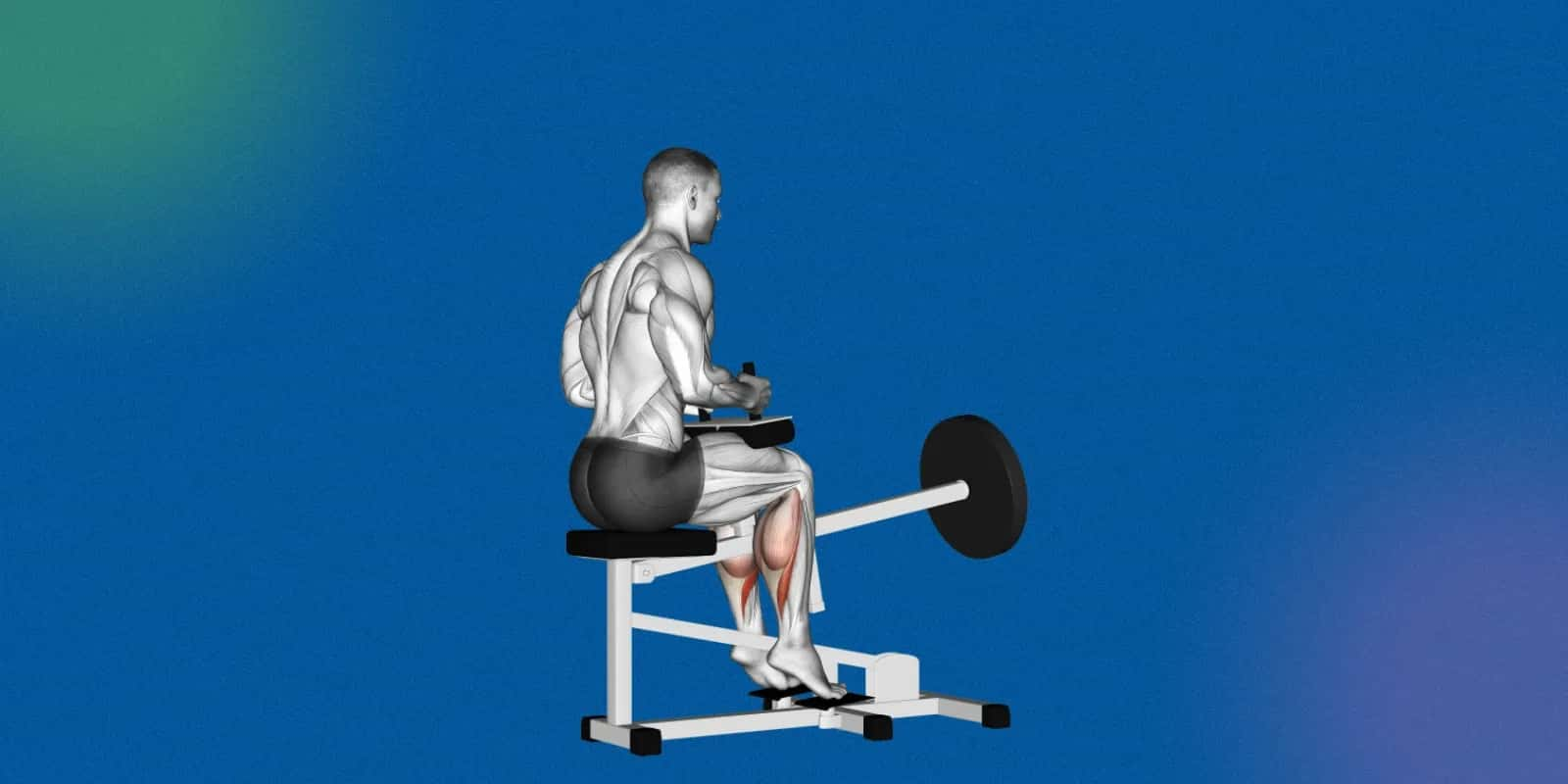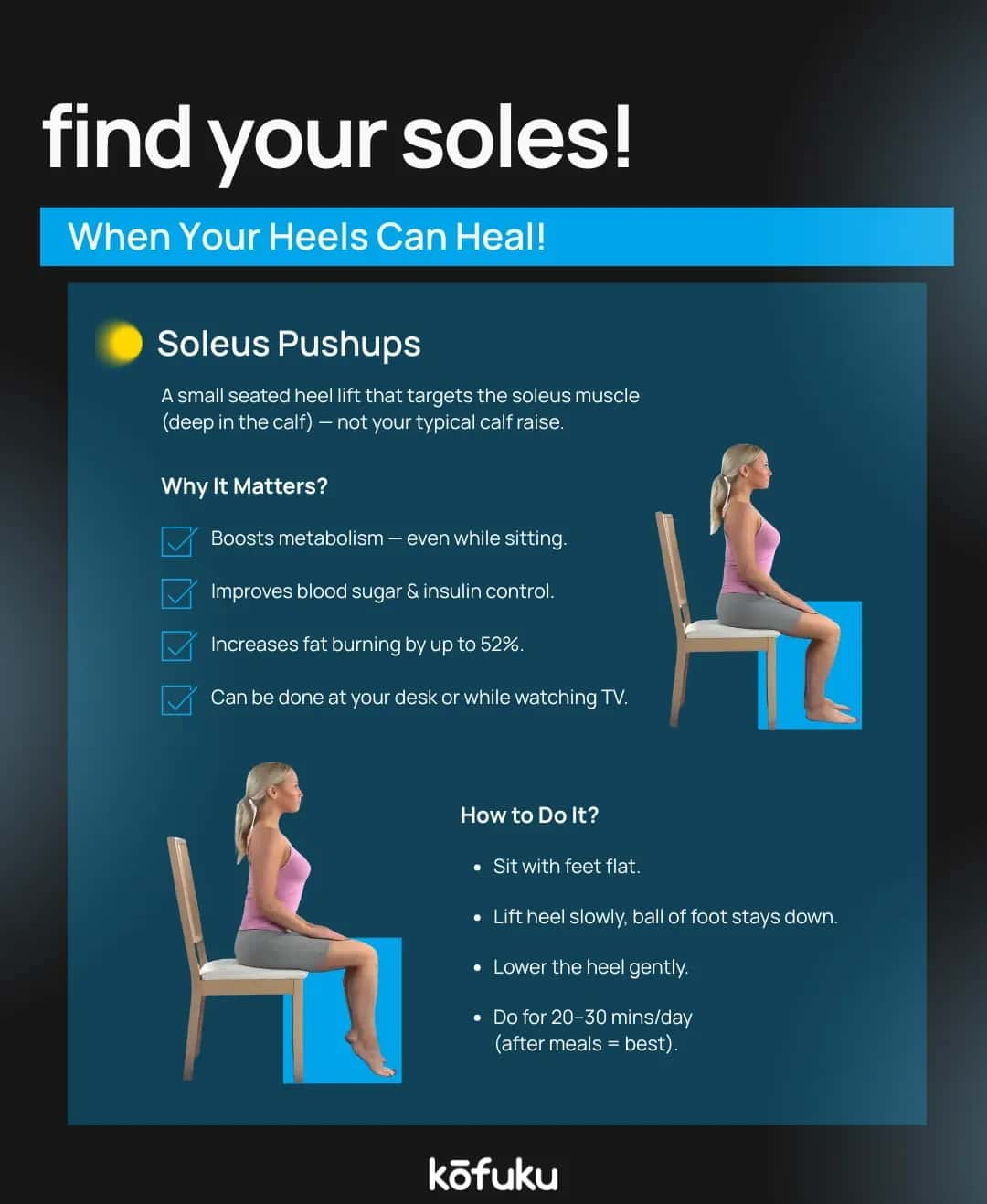Soleus Pushups: An Effective Exercise to Manage Blood Sugar Levels


Introduction
A carbohydrate-rich diet, with unhealthy proportions of processed foods, coupled with a sedentary lifestyle, is one of the major reasons for people getting diabetes.
Freedom from diabetes is the need of the hour, and one way to manage it is through regular exercise and healthy food, but many people have jobs that keep their hands tied to their laptop screen, and movement becomes secondary.
This is where soleus push-ups can be a game-changer. In fact, they are being touted as a great exercise to manage blood sugar levels after a meal. The soleus muscle, located in the calves, utilises blood glucose and lipids as fuel when engaged, making the soleus push-up an ideal postprandial exercise for managing blood sugar levels. But is working out the soleus muscle enough to keep diabetes in check?
Managing diabetes often feels like a daily battle with diet, medication and exercise as key weapons. However, not every effective movement needs to be high-intensity or gym-based. Enter the soleus push-up, a simple, low-impact exercise targeting a deep calf muscle with surprising benefits for blood sugar control.
The soleus, the muscle located under the gastrocnemius in your calf, is uniquely adapted for endurance and constant activity, making it particularly potent in regulating glucose levels. This blog will thoroughly explore what the soleus is, define what the soleus push-up is and its benefits, especially for those with diabetes concerns.
How to Do Soleus Pushups
What is a Soleus Push-up?
This exercise, sometimes called ‘seated calf raise without equipment’, targets the soleus by eliminating gastrocnemius involvement with a bent knee.
Step-by-Step Instructions
- Starting Position: Sit tall in a chair with knees at 90 degrees, feet flat.
- Core Engagement: Sit forward to prevent leaning.
- Lift the Heel: Lift the heel one to two centimetres; muscle engagement should be deep in the calf.
- Hold Briefly.
- Slowly, lower, avoiding rebound.
- Breathe rhythmically: Inhale down, exhale up.
Common Mistakes
- Raising heels high enough to engage the gastrocnemius.
- Straightening the knee
- Swinging momentum

Soleus Pushups: How Do They Reduce Blood Sugar Levels?
The soleus is a broad muscle that lies deep in the calf, beneath the more visible gastrocnemius. Unlike its more explosive neighbour, the soleus is composed primarily of slow-twitch muscle fibres. These fibres are built for prolonged activity, rich in mitochondria and reliant on oxidative metabolism to burn both fats and glucose effectively.
While pair skipping and lunges activate the gastrocnemius, soleus push-ups isolate the soleus through knee flexion. This becomes significant in metabolic health; a muscle designed for constant work can continuously burn blood glucose without fatigue, acting as a natural blood sugar sponge.
In contrast, gastrocnemius heavy movements cause fatigue more quickly, delivering shorter glycaemic benefits.
Understanding how the soleus muscle push-up differs from traditional calf raises is essential. A standard calf raise with straight legs primarily recruits the gastrocnemius, which is excellent for strengthening and improving ankle function, but short-lived when it comes to metabolic activity.
The soleus push-up prioritises the deeper soleus, producing steady blood sugar uptake without needing high effort, a delicacy that a calf raise cannot match. Only by isolating the soleus can you maximise the soleus push-up benefits, especially in the context of soleus push-ups for diabetes.
Soleus Pushups as a Workout
Although large-scale trials are pending, experience-based guidelines suggest:
-
Start with five minutes per session, three to five times daily, roughly 50–100 reps spread out.
-
Increase gradually to 10–15 minutes per session over a period of two to four weeks.
-
Consistency over intensity: Steady repetition holds more value than explosive reps.
-
Large doses (hours of activation) may further stabilise glycemic markers.
-
Consult a clinician, especially if you experience complications or neuropathy.
-
Monitor your progress. Some tips include: 1. Track glucose: Look for reactivity before and after sessions 2. Notice symptom changes: Fewer glucose spikes or hunger pangs 3. Check comfort: Minimal calf soreness expected; lasting pain is not 4. Pair with other healthy habits: good nutrition, sufficient protein, strength training
Benefits and Drawbacks
Blood Sugar Regulation
Recent studies have shown that the soleus can continuously burn glucose once activated. Sitting still, most muscles are dormant, but activate the soleus, and it remains ‘on’, drawing blood sugar and helping insulin sensitivity. This makes the soleus push-ups' blood sugar-modulating effect largely unique.
Power for Diabetes Management
-
Low-intensity, steady-state activation matches glycaemic control strategies better than intermittent, intense workouts.
-
Because the soleus works continuously without fatigue, how many soleus push-ups a day becomes less important than prolonged, repeated activation throughout the day
Accessibility
You can do a soleus push-up anytime, while at the desk, watching TV, or commuting, making them superior to structured gym workouts for consistent glycemic benefit.

Improved Circulation and Weight Support
Strengthening the soleus enhances calf pump action, promoting venous return and reducing swelling, a common issue in diabetes. And with fat oxidation, they complement healthy weight support strategies.
Distinct Advantage Over Walking
While walking engages the soleus periodically, it doesn't promote long-duration isometric activations like soleus push-ups. That's why soleus push-up vs walking shows greater potential for sustained glucose uptake, independent of calorie burn or distance covered.
Not Suitable for Everyone
Soleus push-ups may not be ideal for everyone. In fact, it can cause joint pain or ankle injuries if not done correctly. It is best to consult your physician, especially if you have an existing condition that can be worsened by it.
For instance, if you have heart problems, you should be cautious while doing soleus push-ups, as it can elevate your heart rate as well as blood pressure.
Not a Replacement for Traditional Exercise
While soleus push-ups can help with regulating blood sugar levels, they cannot replace the benefits and necessity of traditional exercise. So, it is important to look at your overall health and requirements while planning your workout routine.
Takeaways
The soleus push-up may look simple, but it's grounded in metabolic science. By activating the unique oxidative power of the soleus, you can tap into continuous glucose regulation, making it a compelling tool for diabetes management. However, keep the following tips in mind:
- Use caution with foot ulcers, neuropathy, or vascular conditions
- Consult your GP before starting
- Keep your feet supported; avoid slippage
- Dress warm: cold calves contract, diminishing engagement
- Integrate into daily routines: at morning coffee, during calls, while reading
Accessible, low-impact, easy to adopt, it's a movement that blends exercise and medicine seamlessly. Speak with your healthcare provider and take control, one heel lift at a time.
FAQs
Q. What are soleus pushups and how do they work?
A. Soleus pushups are seated pushups that engage your soleus muscle, a deep calf muscle located in your lower leg. Becaus of this, it can help improve blood sugar regulation and fat metabolism. It can also improve your overall health when combined with other exercises.
Q. How do soleus pushups help control blood sugar?
A. In soleus push-ups, the soleus muscle contracts, increasing its metabolic activity. It also doesn’t rely on glycogen stores and can draw glucose directly from the bloodstream for energy. Because of this, it can be an effective way to manage blood sugar spikes, especially post-meal.
Q. Can anyone do soleus pushups?
A. Yes, soleus pushups are fairly easy and low-risk, making them suitable for anyone. However, if you have joint problems, high blood pressure, knee or ankle pain, or any other health concerns, you should talk to your physician and do the exercise with caution.
Q. How many reps should I do daily for results?
A. The number of soleus pushups you should do depends on your health goals and overall health. However, generally you should aim for 3-5 sets of 12-20 reps. You can gradually increase the number of sets and reps. Make sure you listen to your body and don’t overdo it to avoid any injuries or adverse effects.
Q. Are soleus pushups a substitute for regular exercise?
A. No, you cannot substitute your regular exercise routine with soleus pushups. This is because they focus on one muscle. However, you can add it to your routine to enhance the effectiveness of your workout.


10 Health Benefits of Apple Cider Vinegar You Should Know

12 Unusual Symptoms of Diabetes

7 Diabetes-Friendly Fruits for Diabetic Patients

A Complete Guide to Women’s Health in India: From Body Metrics to Check-Ups

Beyond the Bump: Why Diabetes in Pregnant Women Demands Your Attention Now

Diet and lifestyle: key to diabetes prevention

IBS and Diabetes: The Unholy Alliance

